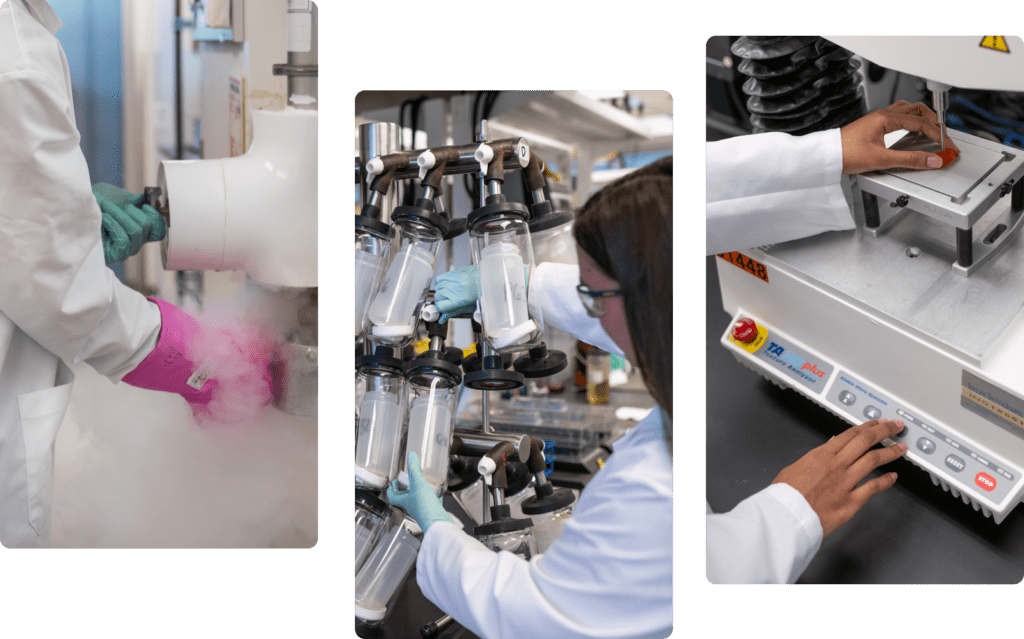Iodide Test
-
Price
$245 per analysis
-
Turnaround time
12 - 15 Business Days
-
Rush
Available


Technical data sheet
Method description
Iodide is extracted from the sample matrix using acetic acid and homogenization. The amount of iodide is determined using the known addition technique. The difference in electrode potential is calculated from the extracted sample and the addition of a known standard of 1 mg/L. This electrode potential change is converted into an iodide concentration utilizing the linear range of the ion selective electrode.
Acceptable matrices
Drink mixes, infant formulas, fruits, vegetables, supplements, concentrates, eggs, and ready-to-eat cereal
Unacceptable matrices
x
Limit of quantitation
18 mcg/100g
Equipment
Iodide Ion Selective Electrode by Hanna Instruments
Method reference
AOAC Official Method 992.24
Reportable unit
µg/100g
Sample size requirements
50 g
Information required by submitter
Please supply estimates
Common Iodide Test Testing Questions
While our sales and customer service team are happy to answer general testing questions, consultations typically start at a rate of $250 per 30 minutes regarding the interpretation of reported test results or questions about our test methods. We cannot consult on regulations, tolerance limits, or claims.
We make every effort to keep our methods and detection limits up to date according to the latest standards and qualifications. If you have any questions regarding the limit of detection/quantification or method references, please contact our Customer Service team at 1-800-245-5615.
Our standard turnaround time is 10 business days for most assays. There are some assays that require a longer turnaround time. We also offer a RUSH service that is half the time of the standard turnaround time of the assay at double the cost of the assay. A few assays that we provide cannot be rushed due to the nature of the test. Please check the specific assay you are interested in regarding the ability to RUSH the turnaround time.
Medallion Labs, a division of General Mills, offers multiple areas of expertise for analytical testing and product evaluation for the food and ingredient industry. Our areas of expertise include Chemical Analysis, Nutritional Analysis, Food Safety, Shelf Life Studies, Microbiology, Specialty Fibers, Physical Testing, Allergen Testing, as well as Product Evaluation (which includes Product Performance and Sensory Evaluation) and Technical Consulting/Method Development. Our methods are developed for the testing of food products and ingredients.
Do you have a more specific question?
Our food testing experts are here to help.
"*" indicates required fields

Helpful content related to Iodide Test
Let’s Get to Work!
Submit your order online and ship your samples today. If you have questions, we are always here to help.
Medallion Labs
A food testing program designed with mid-market and enterprise food and ingredient manufacturers in mind.
